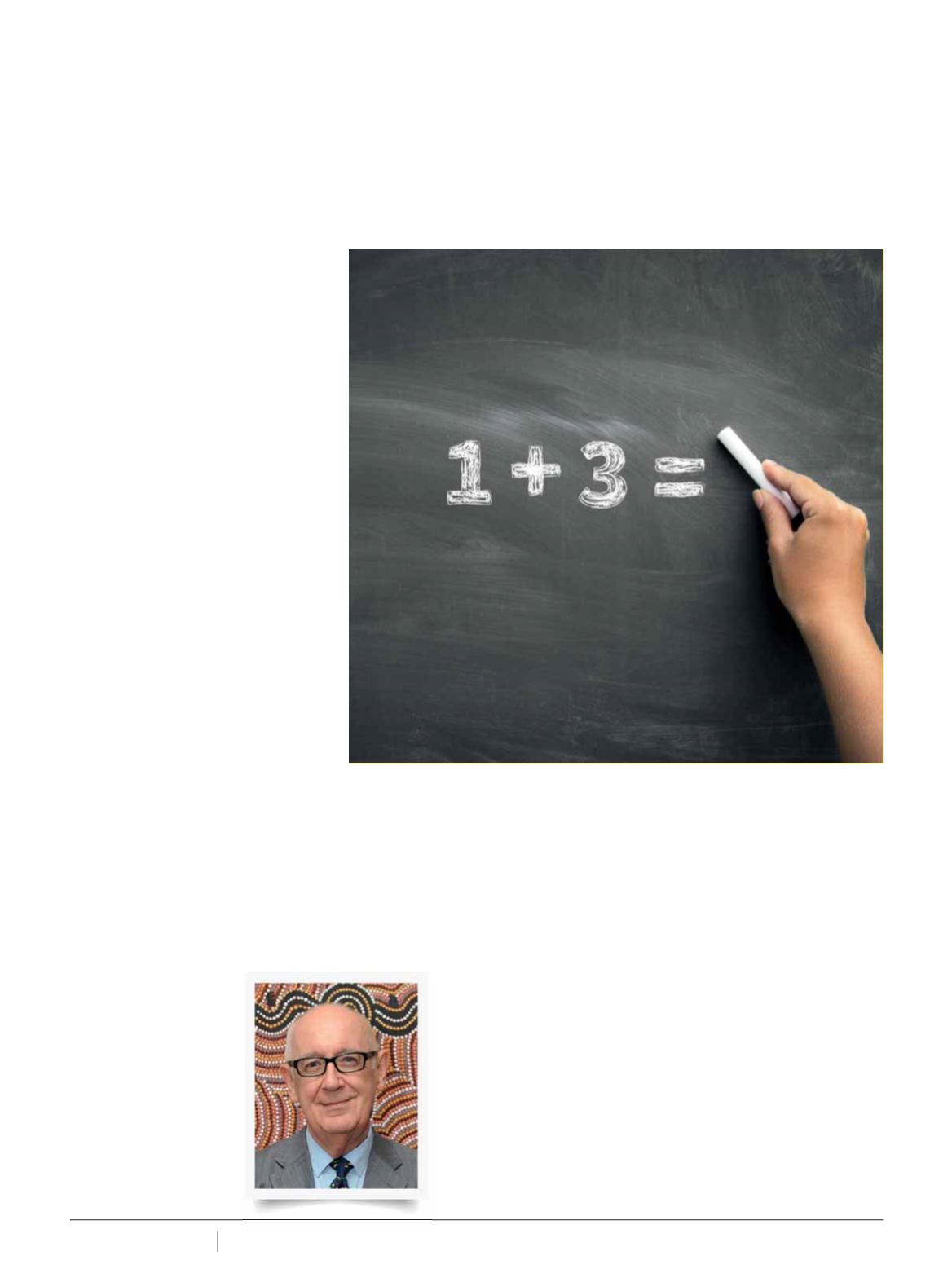

3 4
BUILDING CONNECTION Spring 2019
DO THE MATH
A
lmost 50% of students
seeking an apprenticeship in
the building and construction
industry were rejected due to their
level of mathematics according to the
Apprenticeship Engagement Forum
(AEF)
1
.
With nearly 30 years in vocational
education, 20 of which were at the
coalface, I can testify that one of the
biggest barriers to apprentices and
trainees completing their qualifications
is their ability to do the maths. This
has been well recognised for many
years with multiple taskforces and
committees established at national,
state and even local levels to try and
find solutions.
The AEF is contracted by the Training
Services NSW to be an advocate for
the construction industry on training
matters and encourage the uptake of
construction apprenticeships to meet
the industries skill needs into the future.
According to the AEF, almost 50% of
students seeking an apprenticeship in
the building and construction industry
were rejected due to their level of
mathematics. Andrew realised early on
that the key to improving completions
in construction trade qualifications
would be found in secondary schools
where the fundamental principles of
mathematics are laid.
To help address the maths issue, CEO
of the AEF Andrew Bryson enlisted the
support of Master Builders Association
(NSW), Master Plumbers
(NSW), Housing Industry
Association (NSW) and
the principals of four
high schools.
The first step in
addressing the problem
was to get the members
to engage with the
secondary schools,
students and parents
at high school subject
selection nights and
provide up-to-date information
on building and construction
apprenticeship opportunities.
AEF members regularly encountered
resistance from students when
discussing the need for them to select
maths as a subject. That was the
spark that ignited the development
of the Mathematics in
Trades Pathway (MITP)
based on the current
mathematics curriculum
using experiential
learning concepts.
MITP does not
replace the current
Stage 5 mathematics outcomes, but
simply repackages it in a practical and
engaging way to support students
pursuing an apprenticeship or
traineeship as their first career option.
It aims to:
∫ Ensure students can achieve
workplace numeracy requirements
and the necessary stage 5 and 6
outcomes through the Mathematics
in Trades Pathway.
∫ Support students to ensure they are
confident, capable and successful
apprentices with proficient and
practical numeracy skills.
As an example, students may be
asked to design, cost and finally build a
landscape project. The project involves
making a scaled drawing, calculating
Greg Cheetham
discusses the need for students to sharpen up on their level of mathematics and
shares details of a program that is paving the way to ensure it happens.
Andrew Bryson -
CEO Apprenticeship
Engagement Forum.
JOINERY SKILLS -
GREG CHEETHAM
















